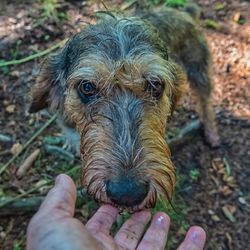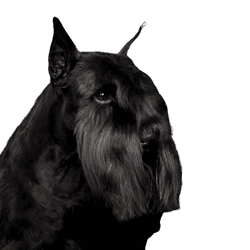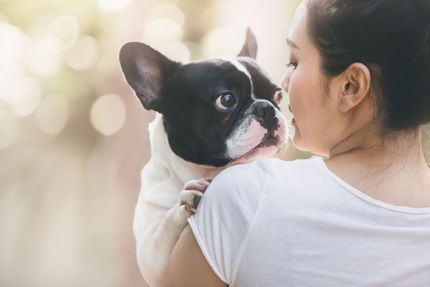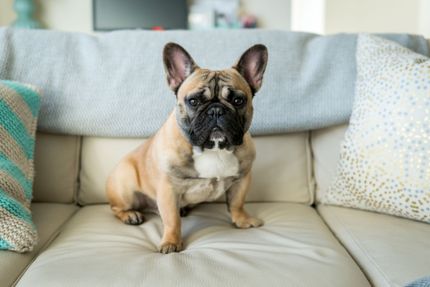
Akita Inu Breed description: Character & Co
Akita Inu
Facts & Origin
What is the origin of the Akita Inu?
1500 years ago, foreign dogs were crossed into the local breed. This resulted in four Japanese Spitz species:
- Akita Inu
- Nippon Inu
- Shiba Inu
- Chow-chow
The enthusiasm for dog fights increased sharply in the 19th century. Mastiffs and Tosa dogs were crossed with the Akita.
Dog fighting was banned in Japan in 1908, but the enthusiasm for the Akita remained.
Emperor Hirohito declared Akita Inu a cultural monument and national property in 1931.
World War II almost caused the extinction of Akitas.
Foreign breeds were crossed with the original breed as a rescue measure. Two forms of breeding emerged. The American soldiers took the somewhat larger, often black tabby animals back to their homes. They became the progenitors of the American Akita.
he smaller, reddish dogs stayed in Japan.
The Akita Inu was recognized as a breed by the FCI in 1964.
What are the breed characteristics of the Akita Inu?
The Akita Inu is a large dog with strong bones. It radiates a calmness from within and exudes dignity.
Typical for the breed is the curled up, bushy tail, which it carries over his back.
As former hunting and fighting dogs, Akitas are robust and confident.
Akitas love to run, they love to be used as sledge dogs and are reliable assistance dogs. Their handsome appearance, paired with a natural protective instinct makes them the perfect watchdog. Akita Inus are not considered list dogs.



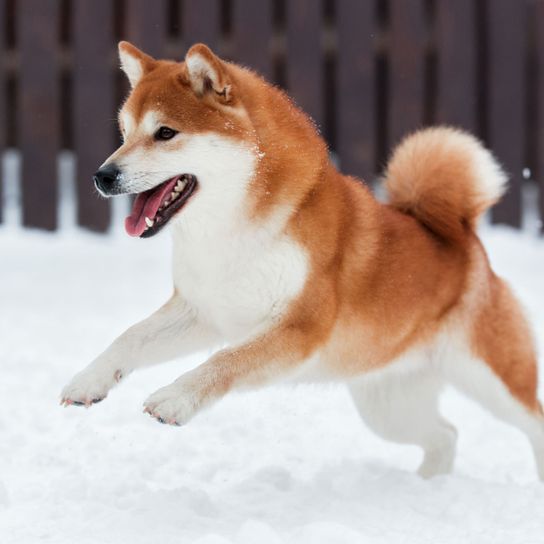
| Alternate Name | Akita |
| Origin | Japan |
| Life expectancy | 10 - 15 years |
| Care requirements | high-maintenance |
| Activity level | average to high |
| FCI group | Asian Spitz and related breeds |
| AKC group | working group |
| KC group | utility group |
Akita Inu mixes
Attitude, character and temperament of the breed
What are the typical characteristics of the Akita Inu?
Confident, loyal and calm in every situation, that's the Akita.
As a typical one-owner dog, strangers are irrelevant to the dog. That is unless he sees a threat in them, then it will protect his master unconditionally. The Akita is friendly with children and plays with them. If children that are unknown to him are playing, please be careful. If your dog perceives the slightest form of aggression, the situation could change.
An Akita doesn't like to be in contact with other dogs.
A dog with so much personality is not suited as a dog for first-time owners, it needs a consistent caregiver. It is important that you already have experience in handling dogs. If you want to buy an Akita Inu, you should plan long daily routes. It doesn't matter whether on foot or by bike, it is important that your four-legged friend can live out its urge to move. Keeping their innate hunting instinct under control is a challenge. This will only be successful if you start intensive recall training from puppy age onwards. Only then your Akita Inu puppy can roam through nature with you without a leash.
You can only raise and lead an Akita if it respects you. You have to earn that respect. It needs a sensitive but consistent leadership with a lot of patience, which takes its personality into account. Akita Inu puppies are playful. Make use of this for educating them. If the bond with your dog is right, you will have a reliable and loyal partner in it.
In the case of an insecure master, an Akita makes its own decisions and acts at its own discretion.
You should consider this when you bring an Akita Inu puppy into the house.
Character
Usage



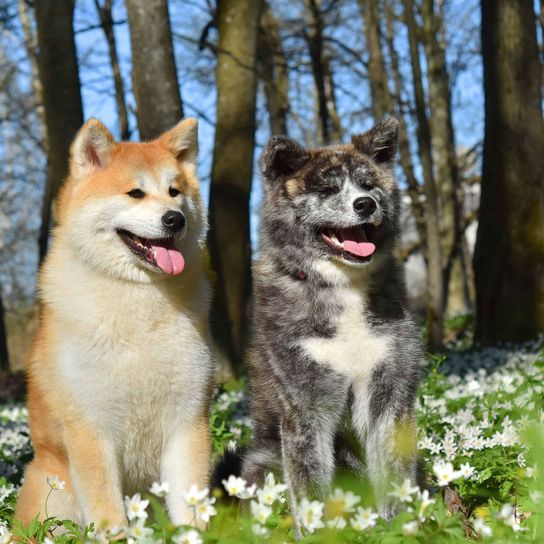

Health and breeding information
What are typical diseases of Akita Inu?
- Underactive thyroid
- HD
- ponylosis
- Arthrosis
- different allergies
- Sebadentitis (skin disease)
- congenital vestibular syndrome
Serious Akita Inu breeding can minimise the risk for these diseases.
What should be considered when breeding Akita Inu?
Your breeding dog must have no HD and no eye diseases. You have to prove this with an X-ray and an eye test. You also need a denture certificate. In this the veterinarian confirms the number of teeth, the dentition and any defects.
According to this a VDH breeding judge authorised to train will check whether your dog's nature and body structure meet the breeding standards.


Appearance and fur of the Akita Inu
The Akita Inu has a well-proportioned body. The head is relatively small, but fits the appearance. It has triangular, raised ears. Its dark, lively eyes are often gazing into the distance, where they seem to fixate on something imaginary. The clear stop and the medium-length muzzle complete the face, which always seems to have a hint of a smile.
The dogs fur consists of a soft, dense undercoat and a hard, straight top coat. It is perfectly suited to protect the dog from all weather conditions. The fur acts as a dirt-repellent and is easy to care for.
You only need to brush your dog when the fur is changing.
Most Akitas are red-fawn or sesame-colored. White and dark brindle dogs are allowed in the Akita Inu breed. All colours, except white, must show the Urachiro. This means that the dogs must sometimes have whitish hair, namely on the cheeks, on the side of the muzzle, on the underside of the jaw, neck, chest, on the abdomen and tail and on the inside of the legs.
If you want to buy an Akita Inu, you should pay attention to a lush, dense fur.
How big is an Akita Inu?
Males are 66 to 68 cm tall and bitches 60 to 62 cm tall.
How much does an Akita Inu weigh?
The weight varies between 35 and 40 kg.
How old does an Akita Inu get?
The avarage lifespan is about 12 years.
| Fur length | medium |
| Fur | - |
| Ear shape | Standing Ears |
| Tail | rolled up |
| Anatomy | muscular, rugged, massive, strong |
| Size ♀ | 61 - 66 cm |
| Weight ♀ | 32 - 45 kg |
| Size ♂ | 66 - 71 cm |
| Weight ♂ | 45 - 59 kg |
| Suitable For | - |
Colors


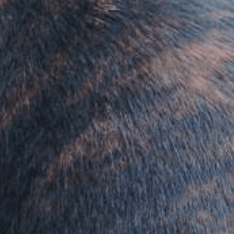
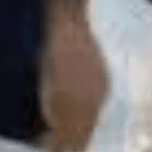
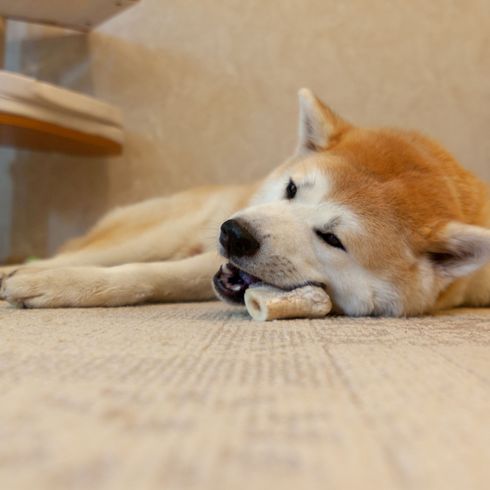


Known Diseases
Arthrosis
Osteoarthritis is one of the most common diseases in dogs. Dogs have an innate, strong urge to move
Hip dysplasia (HD)
The hip dysplasia or hip joint dysplasia of the dog (HD) is a maldevelopment of the hip joint.
congenital vestibular syndrome
hereditary disease of the inner ear
Hypothyroidism
Most often, dogs get sick in middle age. Causes of hypothyroidism. Several causes of hypothyroidism are known.
Sebadenitis
Sebadenitis is a disease in dogs and cats in which the sebaceous glands of the skin are irreversibly destroyed by an inflammatory reaction.
Spondylosis
pathological changes in the vertebral bodies and intervertebral discs
FAQ
-
Yes, the Akita Inu is suitable as a family dog. But is generally a hunting dog and guard dog and is also mainly used as this.
-
An Akita Inu is not dangerous and also not a list dog.
-
No, the Akita Inu is not a list dog and is not called a "fighting dog".
-
An Akita Inu costs about 2000 Euro. There are of course also offers significantly cheaper from 800 euros. But a serious and tested breeding requires from 1500 euros.
-
This dog needs a lot of exercise and mental work. You need to keep him very busy mentally and physically.
Sources and relevant links
Offizielle Seite des FCI
Accessed on 05.01.2023
Akita Club e.V.
Accessed on 05.01.2023
Gabriele Lehari (2004). Ulmers Großes Lexikon der Hunderassen. Ulmer.
Other large dogs
Useful Articles
You can find articles that might interest you in the dogbible blog to match your favorite breed.
Visit our magazineto stay up to date on dog trends.
To find out more, view our Privacy Policy
Find here the breed that suits you and find out what character traits it has. Here you can also learn more about the origin, size and weight of your favorite breeds.
Matching your favorite breed, you'll find articles that might interest you on the dogbible dog blog.
Beef Pizzles as Bully Sticks for the dog
Cat grass for the dog? Is there such a thing? Dangerous?






